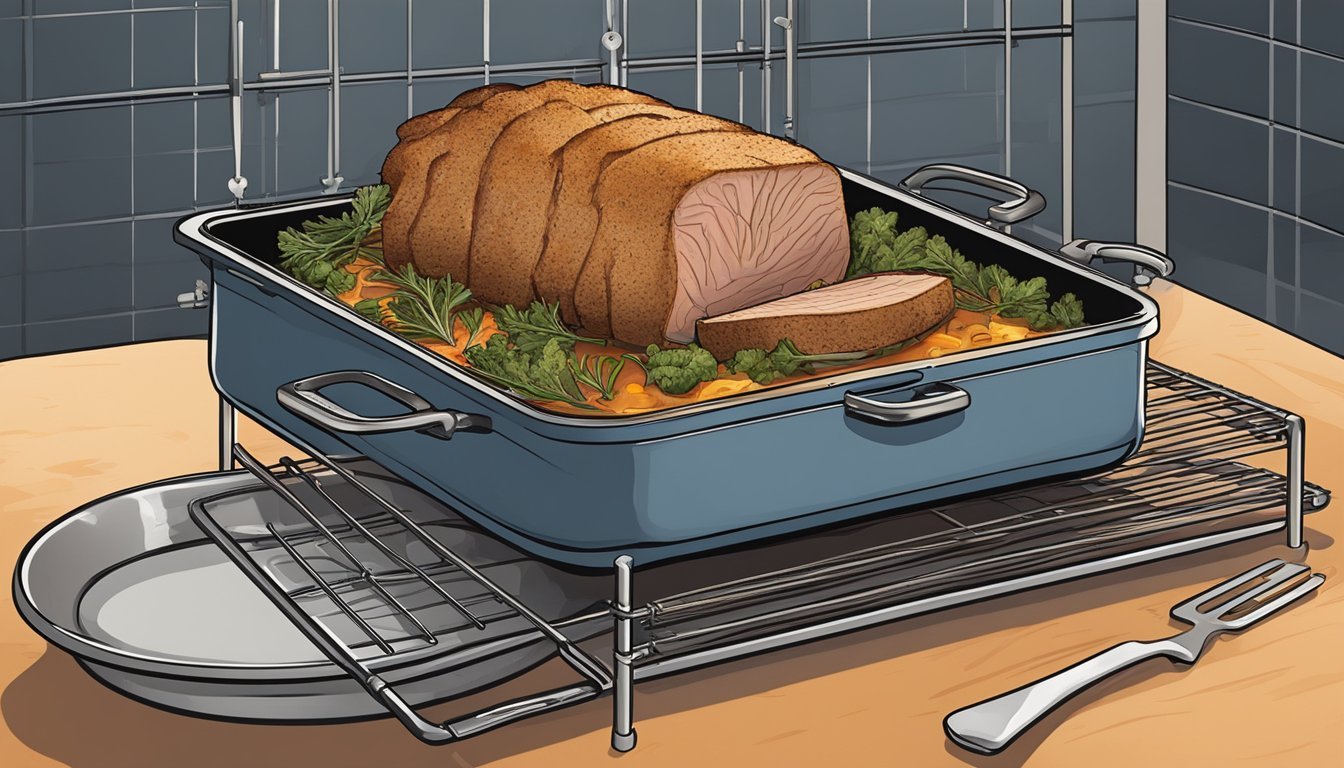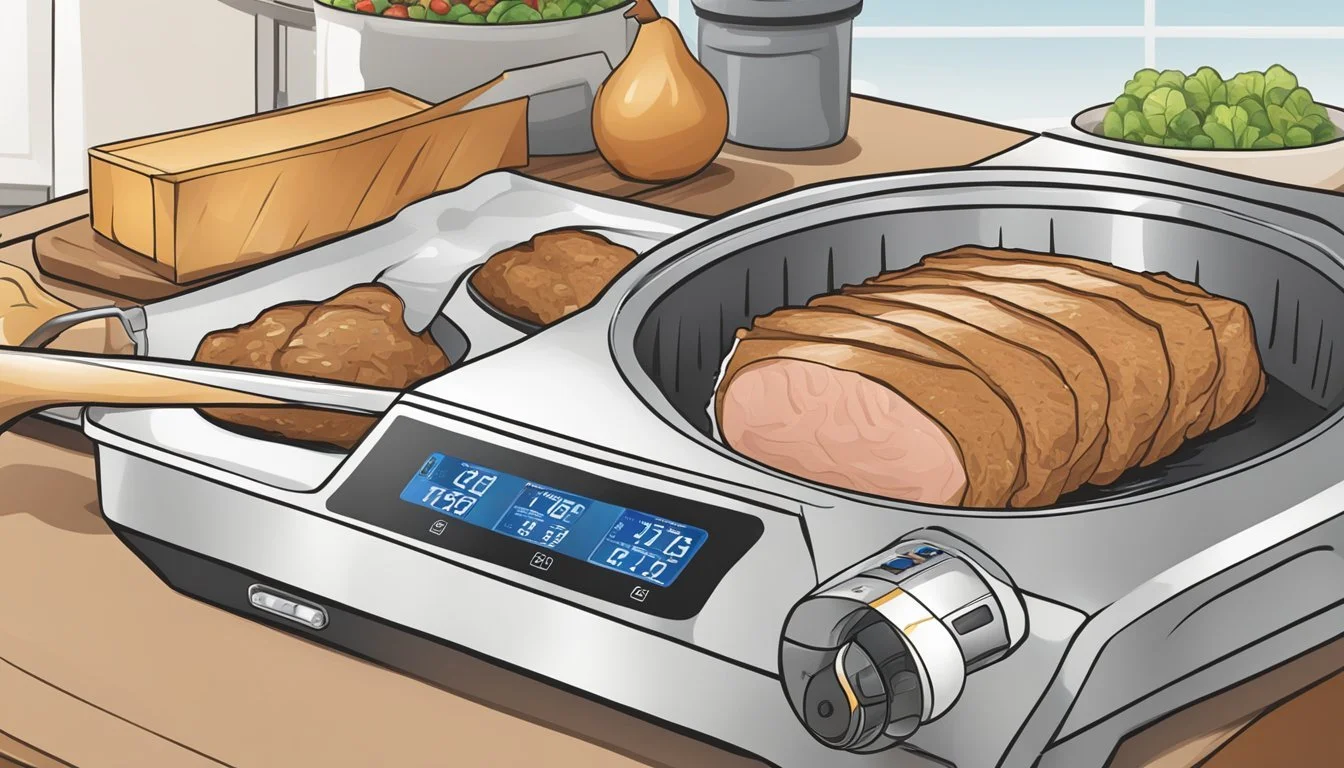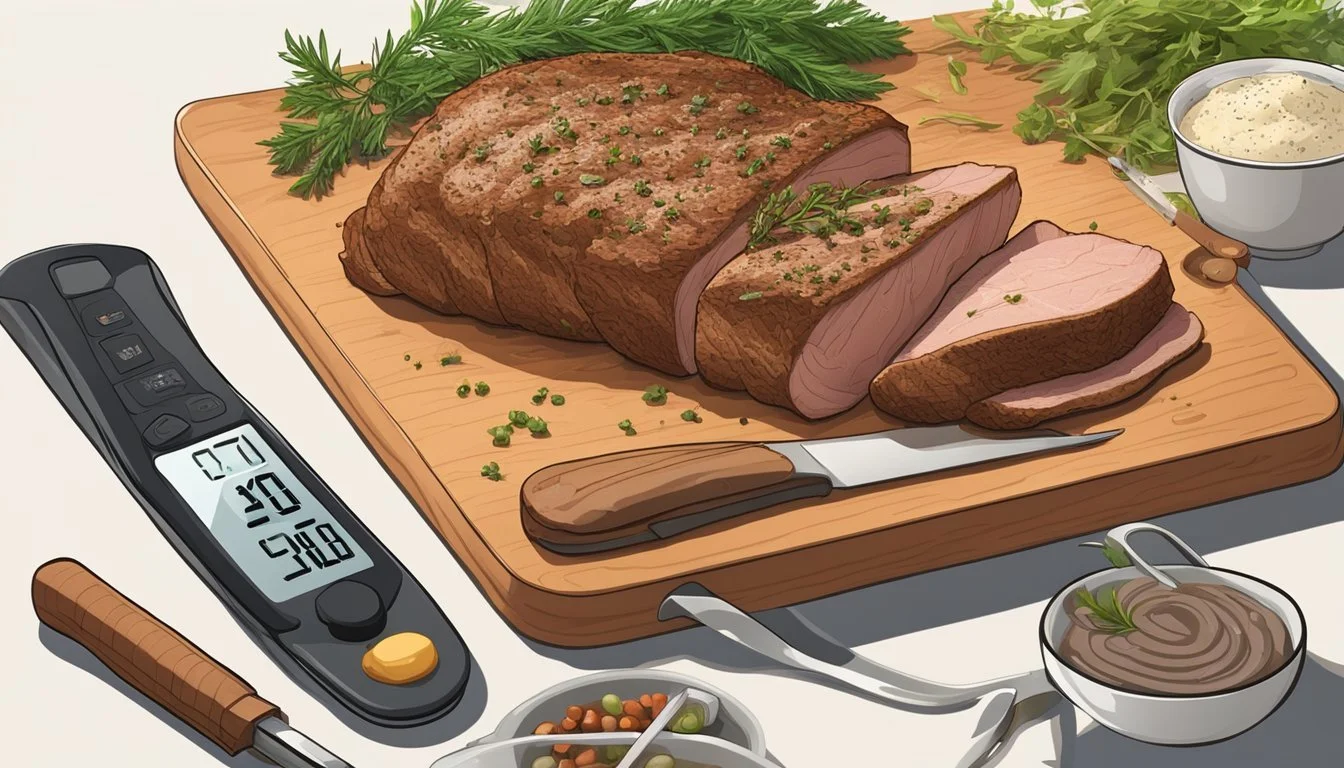Best Way to Reheat Veal Loin Roast
Ensuring a Juicy and Tender Result
When it comes to reheating veal loin roast, the primary goal is to restore the meat's succulent texture and preserve its tender qualities. Veal, being a delicately flavored meat, requires careful handling to ensure that it remains juicy and tender during the reheating process. Leftover veal can easily become overcooked and dry if not reheated correctly, which is why selecting the right method is crucial for maintaining the quality of the meat.
One effective way to reheat veal loin roast is by using a low-temperature oven setting. This gradual heating method allows the meat's internal temperature to rise without sapping it of its moisture. Ensuring the veal remains covered during the reheating process aids in retaining the juices that are essential for a tender and delicious outcome. It also prevents the veal from drying out, keeping it as close to its original state as possible.
Another technique involves gently warming the veal in a covered skillet with a splash of broth or water. This method infuses the meat with additional moisture and can help in reviving the tenderloin to its former glory. Employing these techniques allows the veal loin roast to retain its tenderness and moisture, making it just as enjoyable as when it was first cooked.
Understanding the Basics of Veal Loin Roast
Veal loin roast is a tender and flavorful cut of meat from the loin of a young calf. This section illuminates key aspects of preparing an impeccable veal loin roast.
Selecting the Veal: Quality veal should be pale pink with a fine texture and a clean, milky smell. The tenderness and delicate flavor of veal make it a premium roast beef option.
Preparation: Before cooking, the veal loin should be brought to room temperature to ensure even cooking. One can season it as desired, often with simple herbs and spices to complement its delicate flavors.
Roasting:
Oven Temperature: 325°F - 375°F (163°C - 190°C)
Roasting Duration: ~25-40 minutes per pound*
Desired Internal Temperature for Doneness:
*Medium Rare: 145°F (63°C)
*Medium: 160°F (71°C)
*Cooking times may vary depending on oven and specific cut size.
Cooking to Perfection: They always utilize a meat thermometer to monitor the internal temperature and achieve the desired doneness without overcooking. Overcooking can lead to dry and tough meat, given veal's low-fat content.
Resting the Roast: They allow the cooked veal loin to rest for about 15 minutes before carving. Resting helps the juices redistribute, ensuring each slice is juicy and tender.
By understanding these basics, they can approach cooking a whole veal roast with confidence, appreciating its subtleties and nuances.
Pre- Reheating Preparations
Before reheating a veal loin roast, proper preparation is crucial for maintaining its juiciness and tenderness. These steps help leverage residual heat and prevent moisture loss.
Bringing to Room Temperature
One should remove their veal loin roast from the refrigerator and let it sit for about 30 minutes before reheating. This ensures that the meat reaches room temperature, which promotes even reheating and helps in preserving its moistness and flavor.
Preheating the Oven
It is important to preheat the oven to an appropriate low temperature, typically around 275 degrees Fahrenheit. Doing so allows the veal loin roast to gradually warm up without overcooking it. Using foil can be beneficial during the reheating process, as it helps to trap moisture and evenly distribute the heat.
Reheating Methods for Optimal Juiciness
Properly reheating veal loin roast is paramount to preserving its tenderness and juiciness. Several methods can be employed, each with specific steps to retain moisture and enhance flavor.
Oven Method
Preheat the oven to a low temperature, ideally around 225°F (107°C), to facilitate gentle reheating. Wrap the veal loin in aluminum foil to trap moisture and place it in a baking tray. Adding a small amount of beef stock or water to the tray before sealing the foil can create additional steam, which helps in preventing the meat from drying out. Heat the loin until it reaches an internal temperature of 160°F (71°C), a process that can take several minutes depending on the size and thickness of the roast.
Sous Vide Technique
If precision is a priority, the sous vide method is ideal for reheating veal loin roast. Bag the roast in a vacuum-sealed plastic bag and submerge it in a water bath preheated by a sous-vide machine to 140°F (60°C). This temperature is sufficient to warm the meat without overcooking it. After 30 minutes to an hour, or once it's thoroughly heated, consider giving the roast a quick sear in a hot skillet to restore its exterior texture.
Stovetop Approach
Warm a skillet over medium heat and add a touch of butter or oil for flavor enhancement and moisture. Place the veal in the skillet, turning frequently to ensure even reheating. If available, use gravy or cooking juices to baste the veal loin during the process, which imparts both flavor and moisture.
Microwave Tips
Reheating in a microwave should be done carefully to avoid rubbery texture. Place the veal on a microwave-safe plate, add a splash of water or broth, and cover with plastic wrap for moisture retention. Microwave on medium power for short intervals of 30 seconds, checking the temperature intermittently to prevent overheating.
Using an Air Fryer
To maintain a crisp edge on the veal loin roast while reheating, an air fryer can be effective. Preheat the air fryer to around 350°F (175°C). Wrap the veal in foil to protect its moisture. Reheat in short cycles of 3-5 minutes, checking regularly for the desired temperature and crispness. Keep reheating time brief to ensure the veal remains juicy.
Monitoring and Controlling Moisture
Preserving the juiciness of veal loin roast during reheating hinges on the cook's ability to manage moisture. Key techniques include covering the meat to trap moisture, adding liquids to replenish moisture, and using steam to ensure even heating without drying out the roast.
Covering with Foil
To prevent the escape of moisture from the veal loin roast, one should cover it with foil before placing it in the oven. Foil acts as a barrier, locking in steam and preventing the roast from becoming dry. The meat should be wrapped loosely, creating a tent-like shape to allow some circulation of heat.
Adding Liquids
Introducing additional liquids can be crucial to maintaining moisture in veal loin roast. A small amount of liquid, such as beef broth or au jus, should be added to the bottom of the baking dish. This liquid will create a moist environment as it heats and helps to keep the veal tender.
Suggested Liquid Additions:
Beef broth
Au jus
Water mixed with drippings from the original roast
Creating Steam
Steam generation within the cooking vessel assists in evenly reheating the meat while retaining its tenderness and moisture. Cooks can create a water bath by placing the veal loin in a deeper dish with a small amount of water at the bottom, then covering it with foil. The water bath method gently warms the meat and ensures that no section becomes dehydrated.
Checking for Proper Doneness
When reheating a veal loin roast, reaching the perfect doneness is crucial for a juicy, tender result. The following methods provide reliable ways to ensure proper doneness.
Using a Meat Thermometer
The most accurate way to check doneness is by using a meat thermometer. Insert the thermometer into the thickest part of the loin, avoiding any bones. Here are the key internal temperatures to aim for:
Medium-rare: 145°F (63°C), with a three-minute rest
Medium: 160°F (71°C)
Well-done: 170°F (77°C)
Visual and Tactile Cues
Absent a meat thermometer, inspect the color and texture of the meat:
Medium-rare: Warm, red center
Medium: Pink throughout
Well-done: Little or no pink
Pressing the meat can also indicate doneness; it should feel slight spring back for medium-rare and firm for well-done.
Understanding Residual Heat
Be aware of residual heat; veal will continue to cook once removed from the heat source. Remove the roast when it's 5 to 10°F below your desired doneness and let it rest. This allows the temperature to rise to the correct level and juices to redistribute.
Advanced Reheating Techniques
Achieving a juicy and tender veal loin roast upon reheating requires precise methods. The following advanced techniques focus on maintaining moisture and enhancing flavor.
Low and Slow in the Oven
Reheating veal loin roast in the oven at a low temperature is key to preserving its juiciness and tenderness. One should:
Preheat the oven to a low temperature, ideally around 225 degrees Fahrenheit.
Wrap the veal in aluminum foil before placing it on a baking sheet or in a baking tray. This helps to lock in the moisture.
Add a small amount of water or broth at the bottom of the tray to create steam, aiding in keeping the meat moist.
Place the meat on a wire rack over the baking sheet if available, to promote even heating.
Heat until the internal temperature reaches the desired doneness, checking periodically with a meat thermometer.
Searing for a Crust
To add a flavorful crust to the reheated veal loin roast, a quick sear technique is effective:
Heat a hot skillet over a medium-high flame to prepare for searing.
Once the veal has reached the desired doneness from the oven reheating, remove the foil.
Place the veal in the hot skillet, searing each side for just a couple of minutes to develop a rich, brown crust.
This quick sear locks in flavors and enhances the overall taste profile of the veal.
Post-Reheating Steps
After reheating a veal loin roast, it is crucial to follow specific steps to ensure that the meat retains its juiciness and tenderness. This involves allowing the meat to rest and adding flavorful touches that elevate the overall dining experience.
Resting Before Serving
Once the veal loin roast is reheated to the desired internal temperature, it should be removed from the heat source. It is important to let the meat rest for approximately 10 minutes before slicing. This resting period allows the juices to redistribute throughout the roast, ensuring that each slice is succulent and flavorful. Failure to rest the meat adequately could result in a drier, less tender meal.
Adding Finishing Touches
After the resting period, one might consider searing the veal loin roast briefly on a high-heat pan to develop a rich and appealing crust. This not only adds texture but also intensifies the roast's flavor. Additionally, serving the veal with a side of gravy or au jus can enhance its taste and succulence. If au jus or gravy was reserved from the original cooking, warming it up and drizzling it over the veal slices when serving can significantly contribute to a delightful and moist dining experience.
Safety and Storage Considerations
When dealing with veal loin roast leftovers, one's top priority should be to adhere to food safety protocols and employ efficient storage techniques. This ensures the veal retains its quality and is safe for consumption upon reheating.
Proper Cooling and Storage Techniques
Cooling: It's crucial to allow the veal loin roast to cool to room temperature before storage. However, this process shouldn't exceed two hours, as per USDA guidelines, to prevent bacterial growth.
Storage:
Place the leftovers in an airtight container.
Refrigerate at or below 40°F (4°C).
Consume within 3 to 4 days for optimal freshness and safety.
Reheating Leftovers Safely
To safely reheat veal loin roast leftovers and maintain juiciness, follow these steps:
Preheat: Set the oven to 325°F (163°C), a moderate temperature that warms the meat without drying it out.
Prepare:
Transfer roast to a baking dish.
Add a few tablespoons of broth or water to assist in moisture retention.
Cover: Loosely tent with aluminum foil to protect the veal from direct heat, trapping steam to keep it tender.
Heat: Reheat until the internal temperature reaches 165°F (74°C), ensuring the meat is thoroughly warm and safe to eat. Use a meat thermometer to check.
Adhering to these guidelines will help maintain the delicious qualities of veal loin roast while prioritizing food safety.
Occasion-Based Reheating Suggestions
Reheating veal loin roast can be optimized to fit the occasion, ensuring that it retains its tender texture regardless of whether it's for a holiday feast or casual dining.
Holiday Feasts
During the holidays, a veal loin roast is often the centerpiece of a grand meal. Reheating should be done in such a way that it conserves the meat's succulent tenderness:
Oven Method:
Preheat the oven to 225°F, a temperature low enough to gently warm the veal without overcooking.
Place the veal in a baking dish, adding a cup of broth to aid moisture retention.
Cover with aluminum foil and reheat until warm throughout, checking for an internal temperature of about 145°F for medium rare, which usually takes between 25-30 minutes.
Casual Dining
Reheating veal for a casual meal can be done more quickly, but still requires attention to maintain its quality:
Skillet Method:
Heat a skillet over medium heat and add a touch of oil to prevent sticking.
Sear the veal slices for 2 minutes per side, just until heated through to preserve a tender texture.
If available, use meat juices to deglaze the pan for added moisture and flavor.
Pot Roasts and Beyond
Pot roasts, which tend to be heavier and often cooked as a "round" cut, might require different treatment to retain moisture:
Sous Vide Method:
If originally cooked sous vide, reheat by placing the sealed bag in a water bath at 130°F to slowly bring it up to temperature without losing moisture.
For those without sous vide capabilities, slow reheating in a covered pot with added broth on the stove over low heat is effective. It should simmer gently until it reaches the desired internal temperature.










